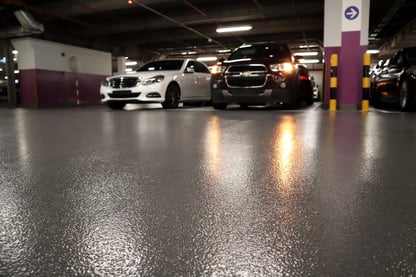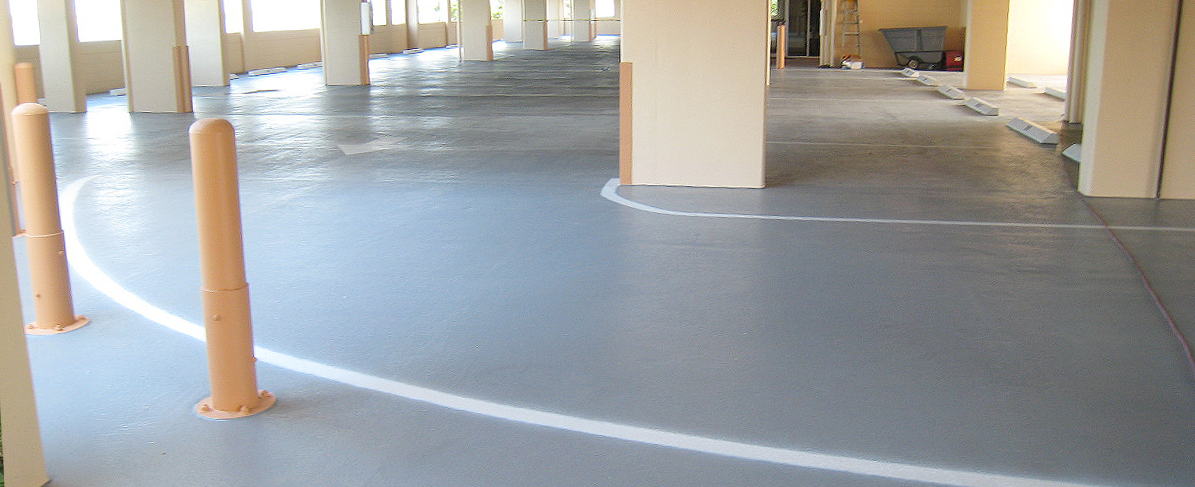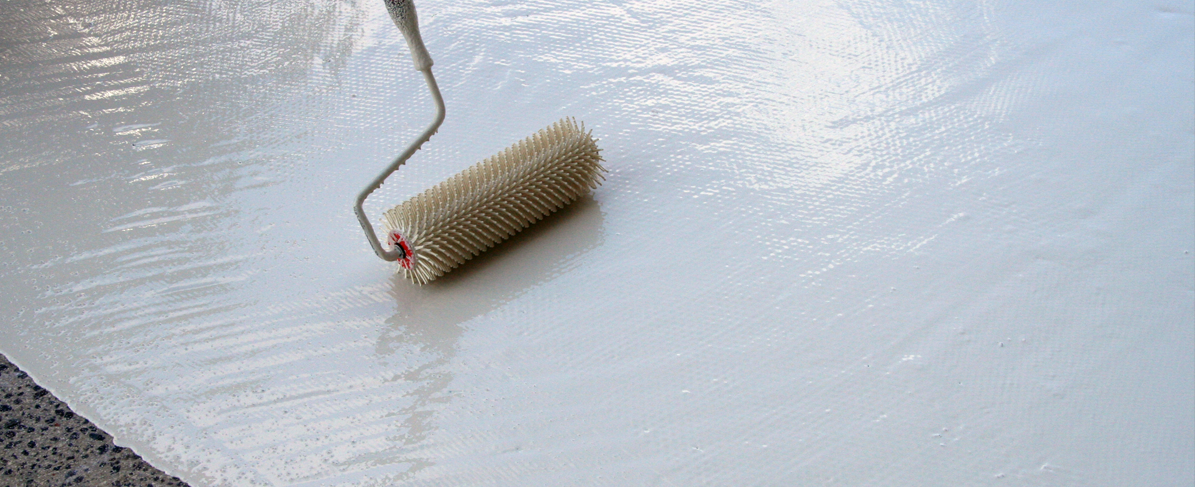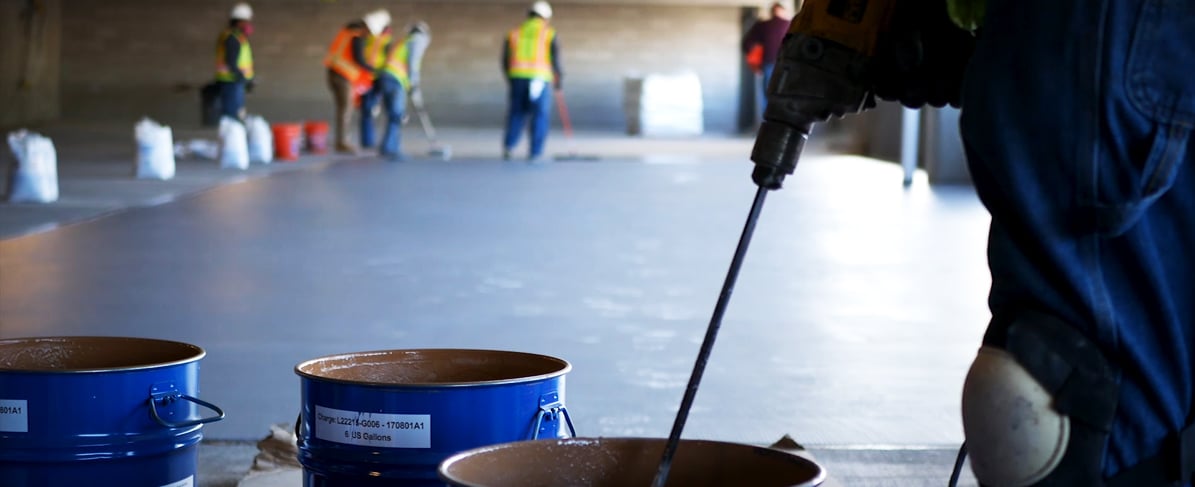Parking structure repair and maintenance can be a large undertaking due to the massive square footage of many parking lots and multi-level garages. In this blog post, we will break down the options for fixing concrete cracks in parking structures and simplify their repair steps.
Settling and shrinkage cracks occur naturally as part of concrete aging and can be exacerbated by the vehicular traffic of parking structures. If not treated properly, these cracks can migrate through the concrete and the waterproofing membranes overtop. Ongoing maintenance can minimize cracks and prevent them from growing into a larger issue like water infiltration and leaks to the surfaces below.
Common Reasons for Concrete Cracks
Concrete cracks are common in parking garages but are generally not a cause for concern. Here are some of the reasons you might find cracks in your concrete:
- Initial settling cracks were not treated.
- Thermal cycling extremes.
- Waterproofing coating was applied before the concrete was able to reach 85% of its final compressive strength value.
- Structure settling and age.
- Extreme movement in the structure.

Facility Walk-Through
As part of ongoing maintenance, you should conduct regular walk-throughs of your parking garage, ideally once every season, and check for any areas of concerns, such as blisters in the coating, concrete degradation, and horizontal or vertical cracks. If you suspect there may be a structural issue, immediately consult with a structural engineer for a thorough review and remediation plan.
Once you’ve determined the affected areas, the facility manager should plan for the repair. If the damage is extensive and widespread, it would be helpful to also bring in a contractor and representative from a building materials manufacturer to discuss. Timing is critical in parking decks, as you may need to block off certain areas and reroute traffic to other areas while the repair method, typically a waterproofing coating or sealant, cures.
How to Fix Cracked Concrete Floors
If you are in a time and/or budget crunch, a simple sealant treatment will offer a short-term repair. For this method, first rout out cracks ¼ inch wide by ¼ inch deep with a grinder or blade. Clean the surface with a broom and blow with a blower. Apply an approved polyurethane sealant, such as Tremco’s Dymonic 100, into the routed crack and properly tool. Allow to fully cure. For details on this application, read our blog post “How to Apply Sealant: The 3 Basic Steps.”
Below are three other methods of repairing concrete cracks for long-lasting waterproofing protection, which vary depending on the condition of the parking deck.
- Concrete cracks with no existing traffic coating system
- Minor cracks in existing traffic coating system
- Widespread cracks in existing traffic coating system
- Repair if there is no existing traffic coating system:

If no coating exists, first rout out cracks ¼ inch wide by ¼ inch deep with a grinder or a crack chasing blade. Clean the surface with a broom and then a blower. Apply an approved polyurethane sealant, such as Tremco’s Dymonic 100, into the routed crack and properly tool. Allow to fully cure. For additional waterproofing, you should also install a traffic coating system across the deck. For this, consult with a coatings manufacturer and apply the membranes according to their application instructions before resuming pedestrian or vehicular traffic. Click here for more information on PMMA and PUMA Coatings.
- Repairs for minor cracks in an existing traffic coating system
For localized repairs in a traffic coating system, square off the repair area and fully remove existing coating down to clean, bare concrete using grinding or scarifying methods. Rout out cracks to a ¼ inch wide by ¼ inch deep with a grinder or a crack chasing blade. Clean the surface with a broom and then a blower. Apply an approved polyurethane sealant, such as Tremco’s Dymonic 100, into the routed crack and properly tool and allow to fully cure.
Next, feather out the edges of the existing well bonded coating to allow for a smooth transition of the repair area. Reinstall a compatible traffic coating system, such as Tremco's Vulkem Systems, according to the manufacturer’s application instructions, overlapping the new coating 2 inches over the existing coating. Allow to cure before continuing pedestrian or vehicular traffic.
- Widespread cracks in existing traffic coating system
If the cracking issue is widespread, you may choose to remove and reinstall a large portion or all of the coating. Fully remove the existing traffic coating system down to clean bare concrete using grinding or scarifying methods. Clean the concrete by using a high pressure 4,000 psi pressure washer and dry fully. Examine the concrete surface profile (CSP) and use shotblasting equipment to achieve the proper ICRI concrete surface profile of 3 to 4. Any old or damaged sealants on the surface or in cracks should be removed and replaced. Cracks should be routed out and treated with a urethane sealant, such as the flexible Dymonic 100. Properly tool and allow to fully cure. Reinstall the traffic coating system according to the application instructions. Once the system has cured, you may resume pedestrian and vehicular traffic to the area. Learn more about the quick turnaround benefits of PUMA technology for parking garages.
Recap
Cracks in concrete are inevitable over time, but proper review of your parking garage and ongoing maintenance can ensure that cracks do not grow more severe and compromise the integrity of your structure. Repairs will vary depending on your deck’s condition so don’t hesitate to reach out to a building materials manufacturer or structural engineer with any questions about proper remediation steps.







